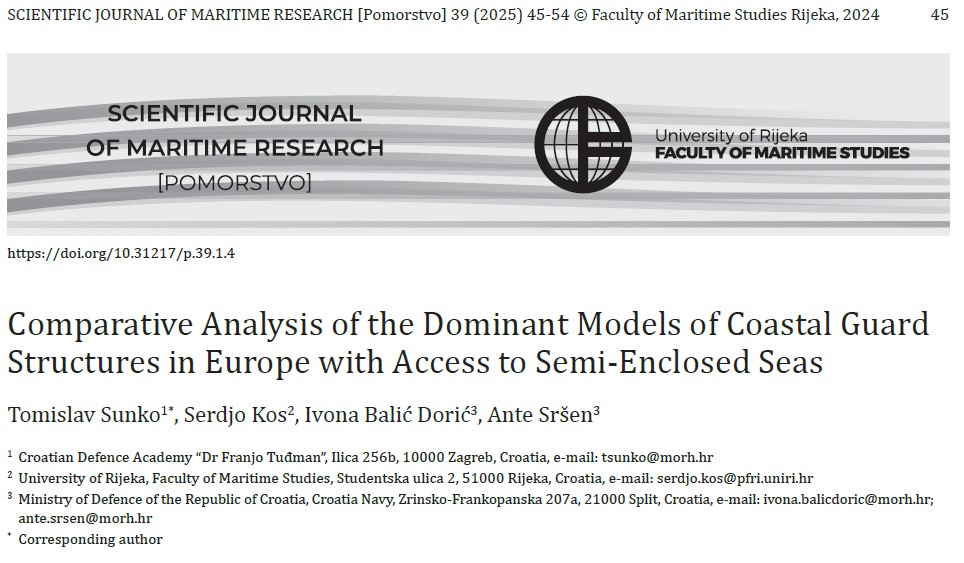Comparative Analysis of the Dominant Models of Coastal Guard Structures in Europe with Access to Semi-Enclosed Seas
Keywords:
Coast Guard, Semi - enclosed sea, Control and protection, Adriatic Sea - eastern part, Republic of CroatiaAbstract
The paper presents different models of the organizational functioning of the coast guards of European countries with access to semi-enclosed seas. It analyses the Coast Guards of the Republic of Italy, the Republic of Greece, and the Kingdom of Norway with respect to different functional organizational models. Special attention is paid to the organizational structure and operations of the Coast Guard of the Republic of Croatia. The paper also explores and analyses the management model of the Coast Guard of the Republic of Croatia in the context of operational efficiency in protecting rights and interests in the maritime areas of the research geographical region, the semi-enclosed Adriatic Sea - eastern part. A comparative analysis of the considered coast guards is presented.

Downloads
Published
Issue
Section
License
Copyright (c) 2024 Tomislav Sunko, Serdjo Kos, Ivona Balić Dorić , Ante Sršen

This work is licensed under a Creative Commons Attribution-NonCommercial-NoDerivatives 4.0 International License.
Scientific Journal of Maritime Research understands the need for authors to disseminate and maximize the impact of their research. When submitting an article for publishing in Scientific Journal of Maritime Research, it implies that the Corresponding Author transfers, with the consent of all Coauthors, the copyright ownership in the referenced submission, including all versions in any format now known or hereafter developed, to the Scientific Journal of Maritime Research.
Copyright protects your original work and research material and prevents others from using it without your permission. Others will be required to credit you and your work properly, thus increasing its impact. Should your submission be rejected or withdrawn prior to acceptance for publication by Scientific Journal of Maritime Research, this transfer will be null and void.
Authors, users or readers of an article need clear instructions on how they can use the article. Scientific Journal of Maritime Research uses the Creative Commons Attribution-NonCommercial-NoDerivatives (CC-BY-NC-ND) 4.0 International License, which governs the use, publishing and distribution of articles by authors, publishers and the wider general public.
The authors are allowed to post a digital file of the published article, or the link to the published article (Scientific Journal of Maritime Research web page) may be made publicly available on websites or repositories, such as the Author’s personal website, preprint servers, university networks or primary employer’s institutional websites, third party institutional or subject-based repositories, and conference websites that feature presentations by the Author(s) based on the published article, under the condition that the article is posted in its unaltered Scientific Journal of Maritime Research form, exclusively for non-commercial purposes.




